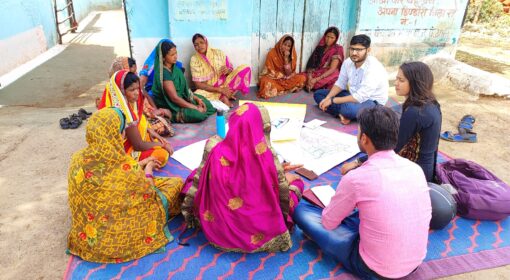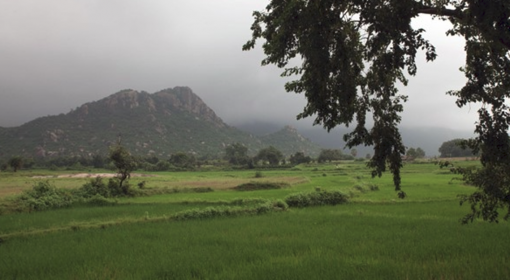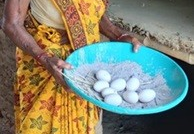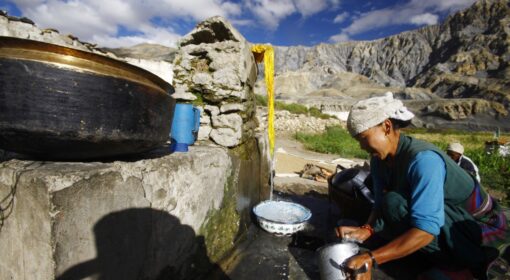By Sumendera and Shubham Jain
In Madhya Pradesh, India, the Sanjha Manch serves as a pivotal gathering where government officials, civil society representatives, and grassroots leaders converge to discuss and address the challenges faced in executing vital schemes. This blog presents the platform’s significant role in driving positive system change and promoting community-driven development.
Every month, a meeting takes place at the Janpad Panchayat (Block level)[1] office, serving as a platform for discussion and collaboration. The meeting is chaired by the Chief Executive Officer (CEO) of the Janpad Panchayat, and brings together various stakeholders, including members of Cluster level federation (CLF), MGNREGA[2] mates, Gram Rojgar Sahayak (GRS)[3], CSOs (Civil society organization) members, and representatives from different line departments such as Agriculture and Veterinary.
For example in Paraswada block of Balaghat, Madhya Pradesh, in a Sanjha Manch meeting the CLF members discussed their issues on fisheries, poultry, regenerative agriculture, health, nutrition and watershed management. A list of schemes were made out of multiple departments and it was requested that it should be displayed on a public forum or should be presented in Gram Sabha in the villages. Various gaps and issues, success and failure faced in implementation, information regarding various schemes were also a part of the discussions.
The primary objective of this meeting is to delve into issues pertaining to the implementation of MGNREGA and other schemes. By facilitating discussions and interactions, the aim is to provide support and enhance the effectiveness of MGNREGA implementation, as well as foster convergence with other schemes. For example, the communities state whatever issues they are facing related to areas like implementation, funding, backlogs, etc and then the concerned government functionaries will take the necessary actions accordingly. The ultimate goal is to bolster rural livelihoods and maximize the impact of these initiatives.
What is Sanjha Manch?
Sanjha Manch (Meaning: Common Platform) serves as a consultative and systematic intervention aimed at establishing a unified platform for all key stakeholders at the grassroots. These stakeholders include leaders of Cluster Level Federation (women collectives), members from government bodies such as the State Rural Livelihood Mission (SRLM) and Janpad Panchayat (block level), as well as various Civil Society Organizations (CSOs). The primary goal of Sanjha Manch is to foster collaboration in planning, implementation, and knowledge sharing around the development plan in a positive and constructive manner. Furthermore, it endeavors to develop comprehensive guidelines for the efficient utilization of rural infrastructure, along with documenting successful experiences and incorporating additional initiatives. This platform aims to identify opportunities for joint collaboration and convergence, enabling the sharing of priorities, bridging communication gaps, and effectively achieving development-based plans.
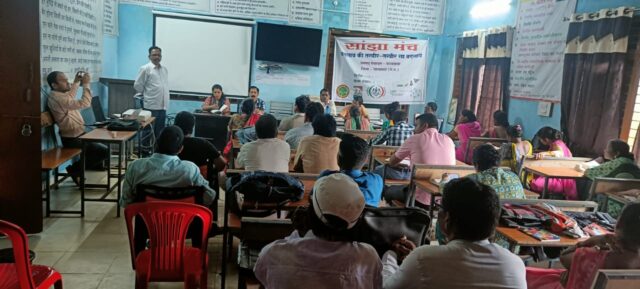
Why did this platform come into existence?
In India when it comes to implementation of schemes, a common thing that can be noticed is that more often than not, they aren’t executed properly. Now, this can be the result of multiple issues such as the lack of awareness and knowledge amongst the community and lack of coordination between multiple stakeholders. Sanjha Manch aims to tackle these very issues and to bridge the gaps between policies and the bureaucracy along with the communities.
How does Sanjha Manch aim at coordination problems outlined above?
- Convergence: Sanjha Manch will help in building convergence as partnerships involve collaborative efforts among different stakeholders. It includes convergence of departments to develop and implement plans, convergence with knowledge partners and CSOs for larger-scale scheme implementation and awareness generation and beneficiary convergence through community involvement for effective resource utilization and building ownership.
- Evidence building and developing new and replicable models: Sanjha Manch aims to document successful experiences, practices, and addition of works that are acceptable, adaptable, and appropriate. Discussions focus on sharing successful interventions, prototypes, their impact, and exploring their potential implementation in other villages.
- Regular interface and interaction: A monthly meeting is conducted with a predetermined agenda, which is set based on the discussions and outcomes of the previous meeting. The focus of these meetings revolves around reviewing the progress of work accomplished on the ground, addressing any work-related requests or requirements, and documenting case studies and success stories.This regular interaction among different stakeholders creates an opportunity to discuss and address any bottlenecks or challenges that may have arisen. Moreover, it will bring more transparency and mutual understanding and will foster a spirit of cooperation and shared responsibility.

What role do women play here?
Although women play crucial roles as leaders and decision-makers in their communities, they often face discrimination and limited access to resources, including land ownership or struggle to obtain equal pay and fair treatment, as they are often subjected to wage disparities and social biases. Addressing these challenges is essential to empower women farmers and laborers, allowing them to contribute more effectively to India’s agricultural development and rural prosperity. In Sanjha Manch, women get a formal platform to exercise their rights. They take on the responsibility of preparing plans that align with the priorities of their villages. In cases where these plans face non-approval or encounter obstacles, women engage with officials at the block level, seeking reasons for the blockage and advocating for their need. Furthermore, women actively contribute by sharing their experiences and success stories of various interventions. They also participate in discussions to identify the necessary support required for the effective implementation of these plans. Their active involvement helps drive positive change and promotes the success of community-driven initiatives.
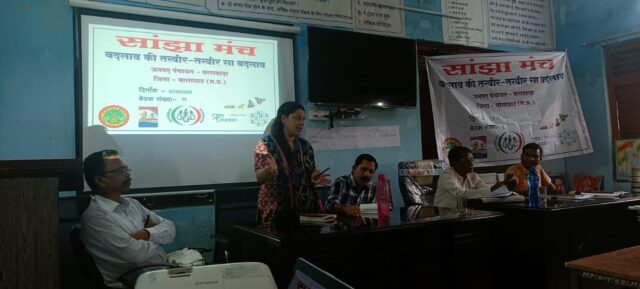
Challenges
Sanjha Manch provides numerous advantages and benefits for multiple stakeholders. However, there are still some areas that need to be addressed and improved for the better functioning of such a platform. Ensuring a uniform understanding of mandates can be challenging due to the presence of multiple rules and regulations, making it difficult for stakeholders to comprehend .Effective coordination among government officials at different levels and other stakeholders (i.e CSO, Community) is crucial to facilitate the flow of information and conduct successful meetings. Clear goals are essential for collaboration, as unclear objectives can lead to mistrust and biased opinions, hindering the effectiveness of initiatives. Fostering a sense of respect among stakeholders is vital for productive relationships, enabling open communication, cooperation, and better outcomes.
Way forward
Sanjha Manch is an ingenious way to better the coordination processes of MGNREGA and other schemes while engaging different stakeholders in a dialogue and idea exchange by harnessing the strengths of different actors through convergence and coordination and at the same time will make the communities aware of their roles and responsibilities. This approach not only promotes improved effectiveness and impact of initiatives but also promotes efficient utilization of resources while building ownership of resources in the community.
[1] The three-tier Panchayati Raj system in India is a decentralized governance structure that empowers local self-government at the grassroots level. It consists of three tiers: Gram Panchayat at the village level, Janpad Panchayat at the block level, and Zilla Panchayat at the district level. Each tier has elected representatives who handle various responsibilities related to local administration, development planning, and resource allocation. This system aims to promote participatory democracy, enhance rural development, and ensure effective delivery of essential services to the rural population.
[2] MGNREGA is a social welfare program in India that guarantees 100 days of wage employment per year to rural households, aiming to provide employment opportunities and improve livelihoods in rural areas.
[3] A Gram Rojgar Sahayak, also known as a Village Employment Assistant (VEA), is a key personnel in the implementation of the Mahatma Gandhi National Rural Employment Guarantee Act (MGNREGA) in India. Their role is crucial at the grassroots level, particularly in rural areas, where the MGNREGA aims to provide employment opportunities and create durable assets for the rural population.
